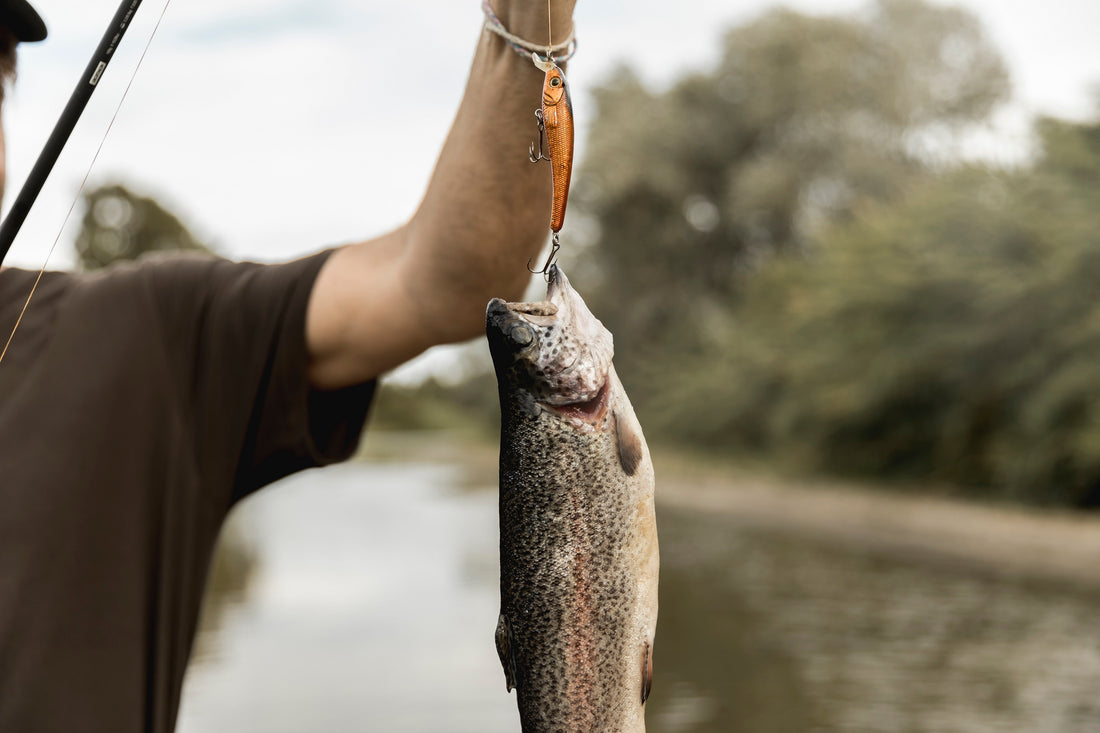We've put together 6 bass fishing tips for those wanting to get out there in your kayak to get that largemouth bass score! #HappyFishing
1. Study Bass Behaviors for Successful Fishing
Lay a good foundation of knowledge about bass.
- Which senses do largemouth bass rely on most to feed?
Bass have very acute vision which means they are attracted to realistic-looking bait and will respond to color as well. Using a bit of red on your lures will mimic injured prey and might get a strike from a bass. They can also detect vibrations and sound waves. This makes kayaking particularly good for sneaking up on bass. It is also to your advantage to learn how to cast your bait effectively - skipping, jigging, etc get the attention of the fish with realistic movement. When picking your lure / bait, do your best to match the hatch. Find out what the fish are feeding on in that season and try to copy it.
- How do they relate to “structures”?
Bass like underwater structures more than open water. Because they are hunting, they like places to hide like logs, ledges, rock beds, and weedy areas so they can lie in wait before pouncing. Your kayak allows you to get into these structures really well. Take advantage of it.
- What temperature do they usually feed in the most?
Bass prefer water temperatures in the 60-80 degree range. This doesn’t mean that you will only catch bass when it is at the optimal temperature, but it can serve as a guide to when and where to fish. During the heat of summer, you will want to drop your line in the early morning or in deeper water where the temps are in that favored range. In the fall and winter, check the swallow water that is more quickly warmed by the sun to see if the bass are biting. Remember to dress appropriately for the water temperature as well as the air temperature. A kayak angler knows that there is always the chance (however, unlikely) of a dunking so they prepare accordingly.
2. Know the Kayak Fishing Rules for your Area
Knowing the fishing rules that apply to bass in your state is super important when fishing. Learning the rules is an important part of bass fishing, so read a copy of your state freshwater fishing rules and learn about tackle and gear restrictions, the fishing seasons, limits on bags, limits of size, and any special laws about your state's waters. If you are catching for food, mid-sized bass caught in cold water tends to taste the best. Remember that fishing from your kayak will limit your weight, so plan appropriately if you plan to bring fish home.
3. Make Sure You’re Comfortable with your Kayak and Equipment
You do not have to use a specific reel or rod to catch your bass if you have never used one in the past. If you are more experienced and comfortable with a spinning reel, just use that until you get more experience with other types of reels. Build up your confidence by using gear that you are used to working with. There is so much time to learn how to fish with baitcasters afterward. Just have fun for now! You are also going to need to control your kayak so there is plenty of learning curve without adding in additional stress. Bass in particular have boney jaws so keep your hooks nice and sharp. You can even file them so you are more likely to set the hook the first time.
4. Try to Use Soft Plastic Baits
As a beginner, if you want to learn how to fish using fake bait, try using some soft plastic stick bait. These are some of the best and easiest artificial baits you can use for largemouth bass. Bring two or three different colors. If you are not getting any bites with the first color you try, switch it up to see if it makes a difference. It probably will in most cases. Particularly with kayak fishing, it is wise to keep things simple. Don’t try to pack a huge assortment of lures, baits, and jigs.
5. Start Out Kayak Fishing in Smaller Ponds and Lakes
Almost every angler can catch this fish within a short drive from their home. Just find a small lake or pond that’s quick and easy for you to get to. You are so much more likely to fish there more often, get more practice, and experience more success in largemouth bass fishing this way. You are also more likely to stick with it if you start fishing at a spot that’s close and convenient for you. And with your kayak rigged and ready to go, there are so many accessible spots that might not be frequented by boaters or reachable by shore anglers. A short paddle from home might have you in the perfect spot to pull up some bass.
6. Practice Makes Perfect
The only way to score and become an expert in bass fishing for beginners is to know and practice how to properly catch and release the fish. You need to know not only how to catch the bass, but also how to safely release them back into the water. When you do this properly, you are doing your part to help us all ensure our fish population will continue to grow for many more years to come.
Need a fishing kayak? Shop our kayaks to choose the right one for you! #HappyFishing

